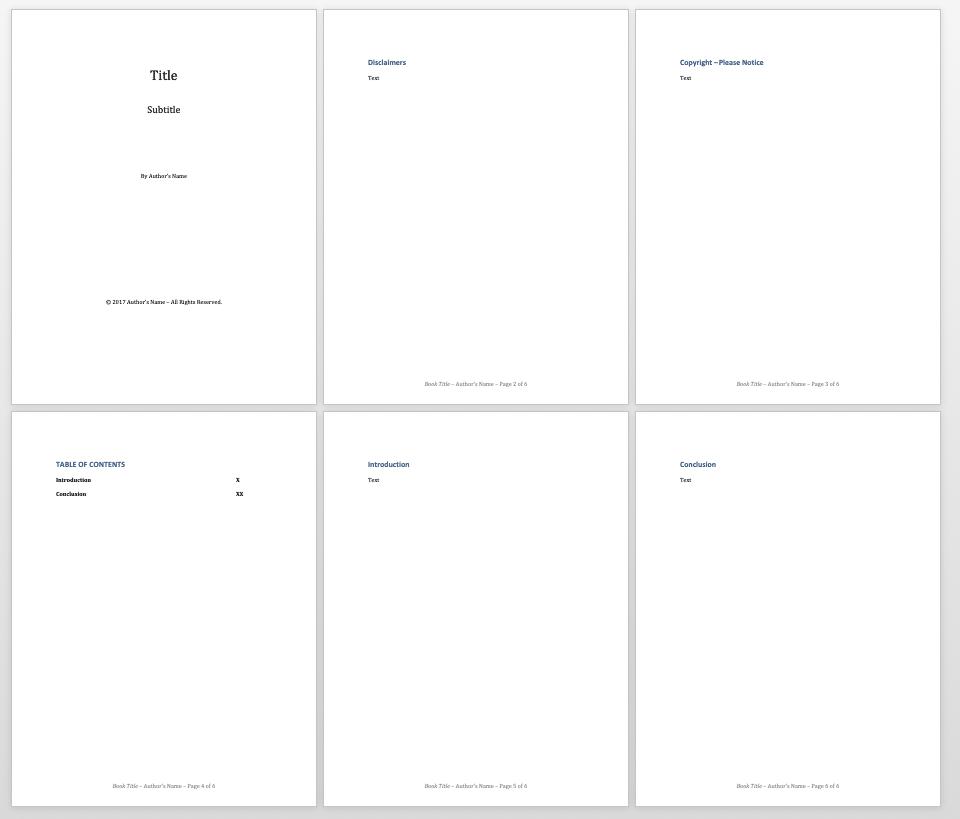Create E-Books and Kindle Books Using Microsoft Word
Format an E-book in Word for Kindle
 Hi There!
Hi There!
A few of my friends have seen the books I’ve published on Amazon Kindle Direct Publishing and they were wondering how to get started writing and publishing books. I was wondering that, too, at one point.
That was when I found a Word template to use but… I didn’t think it was good enough.
So I made an improved version of the template!
This is the exact template I use for publishing my own Kindle and e-books online, which does the exact styling you need to publish your own books on Amazon Kindle.
This MS Word E-book Template Works for Regular E-Books AND Kindle Books
You don’t have to write the content twice – once for each type of book… no. This same Word document works for both e-books and Kindle books.
Kindle Template Sample
Here’s a sample of how this specially formatted document looks – it’s all ready for you to enter your content and add more pages. You get a title page, a few sample pages, a footer, table of contents and even the disclaimer and copyright pages to use if you want:

Finally learn how to format an e-book with this template – just convert it to PDF… simple!
Download it Now… FREE
Download this template and then use it for all the books you publish.
Go HERE to add it to your cart (FREE)
Frequently Asked Questions – Kindle Word Template
Q: Can I use a free version of Microsoft Office/Word and still publish on Amazon Kindle?
A: Yes! If you’re able to save documents, it’ll work. You can use Microsoft Word or even download LibreOffce, which is free. It’ll even work with Google Docs – just import the file.
Q: Can I use this to create regular PDF books for people to download?
A: Yes, I use this template all the time for that. Create in Word and then export to PDF. It’s sometimes called print to PDF. If your computer doesn’t have that option, there is some free software you can download to print to PDF and then it’ll work like a printer but it’ll save a PDF instead of actually printing. It saves the printed format nicely for you.
Q: How else can I use this template?
A: Make sure to include links at the end for offers where you get commissions (like affiliate offers) or links to other books or products you have. It’s free advertising space, basically. You can label these sections something like “Resources” or “Bonuses” or something like that.
Instructions for Using the Kindle Template
How to Format an E-book for Kindle
Here are the instructions on how to use the template once you receive the files in your email.
Change things like the title on the first page and in the footer. Edit the Table of Contents and then set up as many pages as you need. The title for each section should be a Heading 1. That way, you can easily link to each section of the book. I like to start each section as a new page. I’ve put one in there as an example.
When starting a new page, I find it helpful to have a blank line at the end of the previous page. This kind of helps the heading of the next page stay separate from the previous page.
When you publish on Kindle, you won’t have page numbers but make sure you link your Table of Contents to each section so that it’s easy for people to get to those pages. Just go into Word and make hyperlinks. You’ll link each item in your Table of Contents to the header, so again, make sure each section has a header (I included some for you as examples in the template).
When you export to PDF, make sure your links work by going into the PDF and testing the links. The best way to make sure links always work is to make all your links actual URLs – versus linked text. I sometimes have to open the document in LibreOffice and then export to PDF to make sure the linked text works if you do it that way (instead of linking URLs). You may not have this issue but again, make sure you do good testing.
If you have any questions, just let me know.










